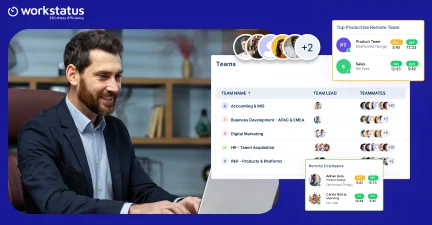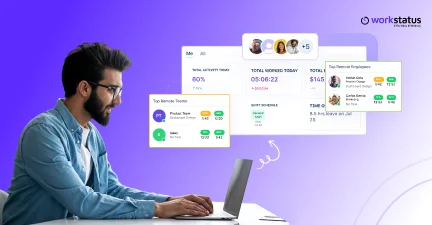Table of Contents

The world is going remote, folks. And while it’s finally great to wear sweatpants to work, HR managers are sweating bullets trying to manage this new “invisible” employee breed.
The flexibility is excellent, but you’ve got to rethink your whole approach to keeping everyone in line.
Think about communication breakdowns that could make a game of telephone look like a symphony, employee engagement that’s about as exciting as watching paint dry, and the ever-present fear of “Are they actually working or just binge-watching Netflix?”
Did You Know?
According to a recent study, about 40% of employees live their best life in pajamas.
But managing a team that could be anywhere from their couch to a tropical beach (with a questionable internet connection) comes with unique challenges.
This blog elaborates on the common remote team management challenges and gives ideas for solutions framed as ‘How can HR create great teams that work hundreds of miles apart’ instead of ‘Here is how to control your employees.’
Recognizing these changes and devising suitable methods to address each issue will help you create a more productive and engaged remote staff.
Here we go to discuss the main challenges in remote teams and find out how to solve them.
Overcoming the Challenges of Remote Team Management
Let’s check out how HR managers can overcome the common challenges of remote team management:
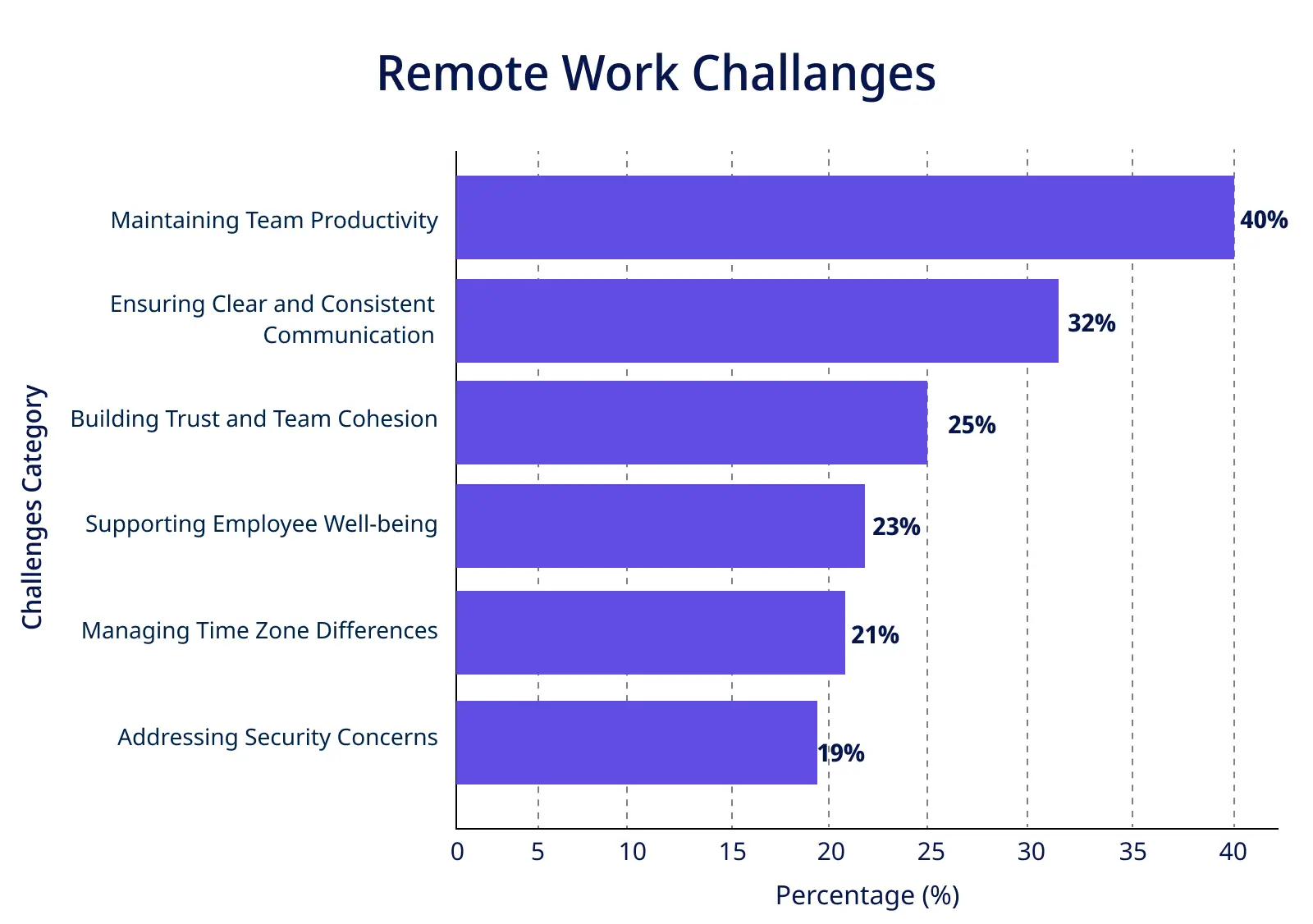
Maintaining Team Productivity
Ensuring high productivity is one of the primary concerns for HR managers overseeing remote teams. Home distractions can turn into productivity black holes with colleagues and supervisors absent physically.
A Gallup study reported that 38% of employees feel less engaged when working remotely, which sounds like a fancy way of saying they’re busy discovering the art of daytime TV.
Why it Matters for HR?
Low productivity can lead to missed deadlines, project delays, and disgruntled clients, which keeps HR managers up at night.
So, to keep the wheels turning, HR managers must develop strategies and tools to keep remote teams engaged and productive.
Solution
- Project Management Tools: Use a platform like Workstatus to monitor daily progress and set clear goals. Think of it as your virtual manager watching over everyone’s shoulder without a judgmental gaze.
- Performance Metrics: Establish clear KPIs tied to individual roles and ensure employees know these goals. Using productivity tracking software like Workstatus can provide much-needed accountability without resorting to random pop quizzes.
- Time Management Techniques: Encourage methods like the Pomodoro Technique to help employees focus during work hours. After all, who doesn’t love an excellent tomato-themed productivity strategy?
Ensuring Clear and Consistent Communication
Communication is the secret sauce to the success of any remote team.
In a remote setup, the absence of face-to-face interaction can lead to misunderstandings and delays that could rival your favorite suspense thriller.
A Forbes survey found that 56% of remote workers face communication challenges. This is where HR managers come in, like the wise wizards of workplace collaboration.
Why it Matters for HR?
Effective communication prevents operational bottlenecks, ensures alignment, and maintains workplace harmony.
HR managers must build communication channels that promote transparency, timely updates, and clarity without sending everyone into a notification frenzy.
Solution
- Real-time Communication Tools: For daily chats, use popular applications, including Slack, Microsoft Teams, or Zoom. Clearly distinguish between the need to use instant messaging (appropriate in an emergency) and when you can send an email and get to it later.
- Regular Check-ins: Host weekly or bi-weekly virtual meetings to discuss progress, roadblocks, and updates. These are the virtual water calmer moments to keep the team connected.
- Communication Guidelines: Develop clear policies that define expectations, such as how long it is too long to wait for a response. Set the tone for open communication but avoid bombarding team members with constant notifications.
Building Trust and Team Cohesion
Developing trust and establishing a culture of inclusion can be even more difficult as employees tend to feel they are the only individuals from their company on a remote team.
HR managers must find ways to create that mystical team feeling, even if it means pulling a rabbit out of a hat.
Why it Matters for HR?
Lack of trust and team unity leads to a lack of teamwork, increased negative experience, low morale, and high turnover, which is a team’s nightmare.
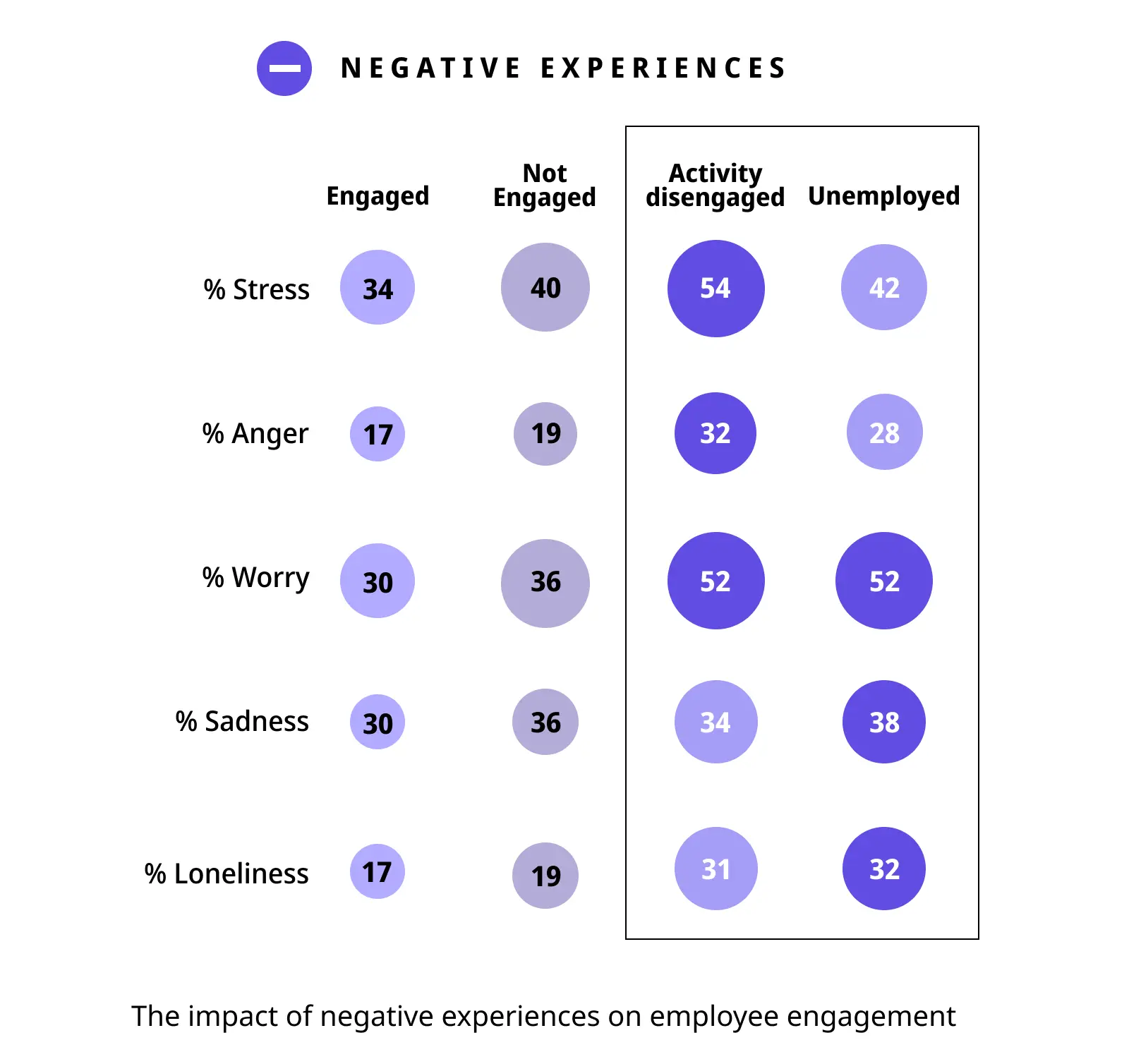
HR managers need to produce an environment that allows remote employees to feel like they know each other as people do in the typical 90s sitcoms.
Solution
- Virtual Team-Building Activities: Organize real-time chats, such as happy hours or casual game sessions, to mimic the natural small talk in an actual workplace.
- Collaboration Opportunities: Provide tasks requiring participation from different departments within the organization. Start organizations’ orientation programs or “buddy systems” to assist new employees in acclimating themselves.
- Recognition and Rewards: Incorporate social media to recognize personal and group achievements. Besides, everyone adores a shout-out, right?
Supporting Employee Well-being
Burnout may easily creep into a person’s life when they work from home since it removes the delicate line between work and home.
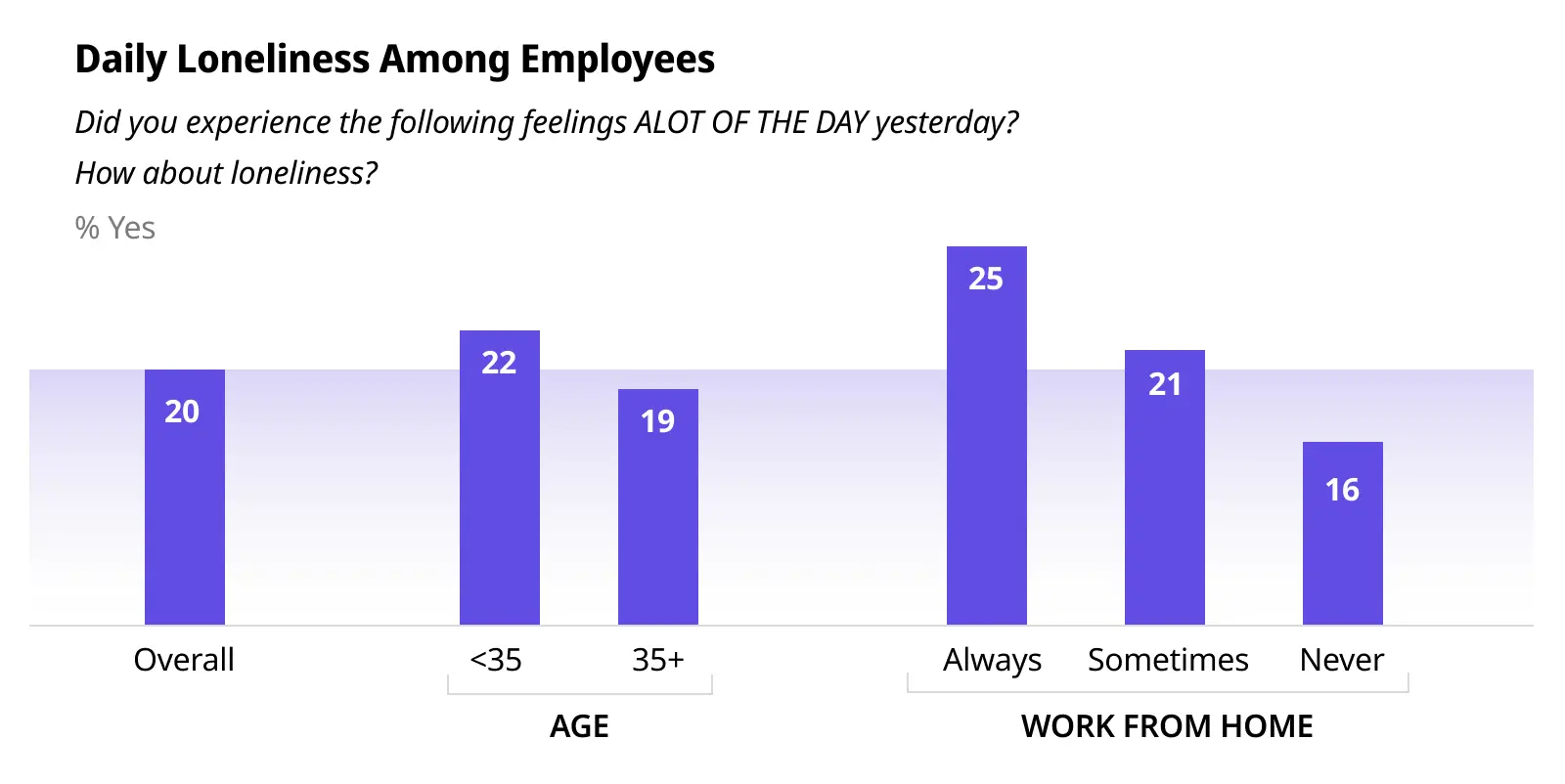
An anonymous survey by The Worklife found that 26% of remote employees experienced loneliness, and 37% were stressed compared to those working in an office.
HR managers are responsible for monitoring and supporting employee well-being, even from afar.
Why it Matters for HR?
Employee well-being directly impacts productivity, engagement, and retention. So, HR managers need to prevent burnout before it becomes an Olympic sport.
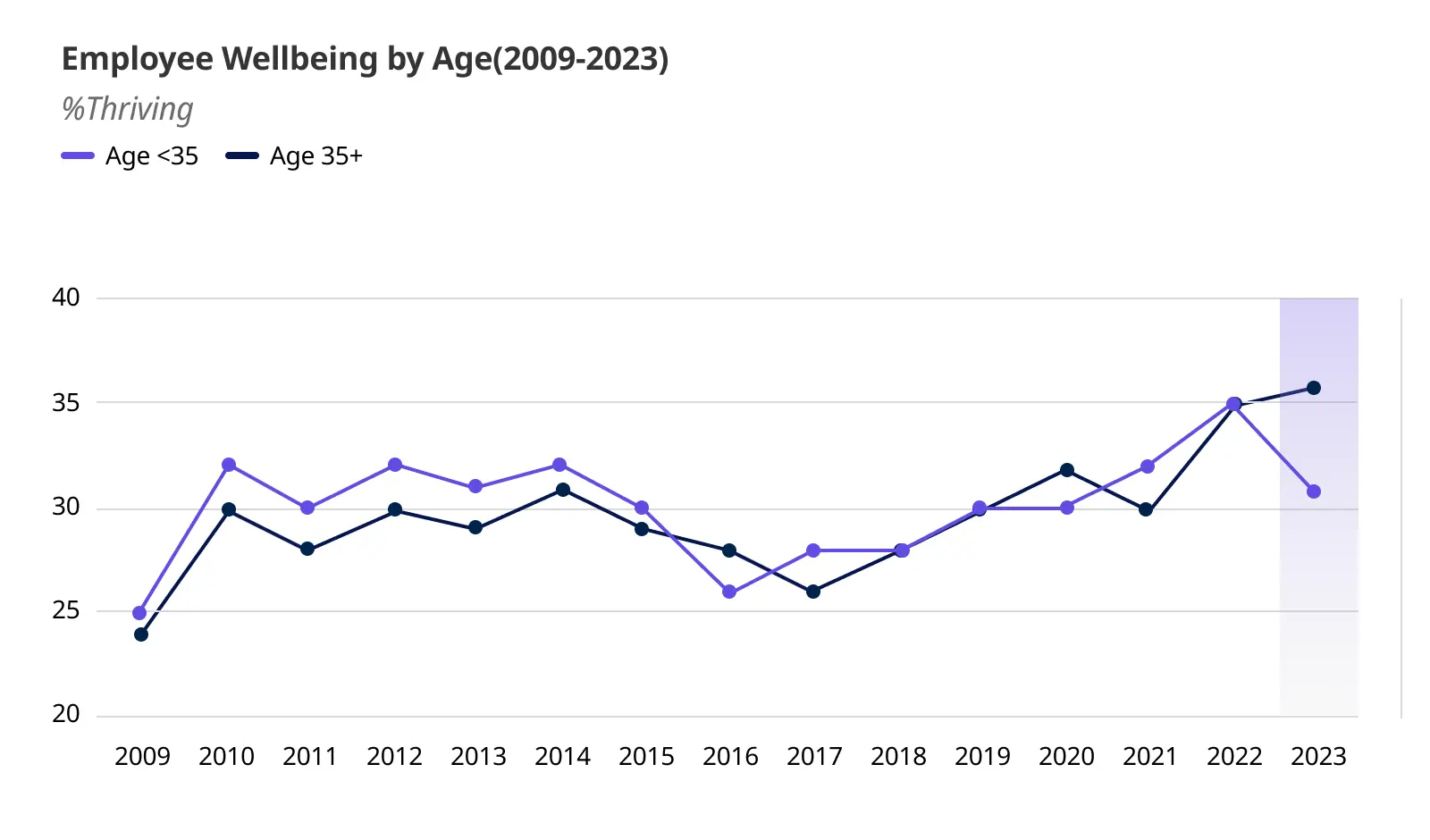
Solution
- Wellness Programs: Organize virtual wellness initiatives like yoga sessions, mental health workshops, or mindfulness webinars. You could even include puppy videos for good measure.
- Surveys and Check-ins: Conduct regular pulse surveys and one-on-one check-ins to understand employee concerns. Create an open forum for discussing workload management—without turning it into a therapy session.
- Work-life balance Policies: Establish boundaries between work hours and personal time. For example, consider “no meetings Fridays” or designating specific times during the day for employees to step away from their screens.
Managing Time Zone Differences
Coordinating a global remote team? You might be juggling flaming swords.
According to Buffer’s 2023 State of Remote Work report, 32% of remote workers say time zone differences are one of their biggest challenges.
HR managers must establish systems to ensure smooth collaboration across different time zones, preferably without requiring a time-travel machine.
Why it Matters for HR?
A lack of coordination can lead to miscommunication and project delays, so HR managers must design workflows that accommodate time zone differences and keep work flowing like a well-oiled machine.
Solution
- Scheduling Tools: Use tools like Workstatus to identify overlapping work hours. Suggest flexible schedules to help everyone play nice.
- Asynchronous Work Culture: Promote an asynchronous work environment so team members can work independently. No one should have to wake up at 3 AM for a meeting!
- Follow-the-Sun Model: Implement a “follow-the-sun” approach where tasks are handed off from one time zone to another. It’s like a relay race but for projects.
Addressing Security Concerns
Remote work heightened the risk of data breaches. A Forbes report found that 90% of IT professionals believe remote workers pose a security risk.
It’s like giving your house keys to a cat; what could go wrong? HR managers must work closely with IT to ensure employees have the right tools to keep data safe.
Why it Matters for HR?
A security breach can result in data loss, financial harm, and a reputation that takes a nosedive.
HR managers must ensure remote workers have secure systems and understand the importance of cyber security protocols.
Solution
- Cybersecurity Training: Conduct regular training sessions to educate employees on best practices, such as avoiding public Wi-Fi and spotting phishing scams.
- Security Tools: Implement VPNs and multi-factor authentication to keep data safe. For added protection, employees can be given encrypted devices or software.
- Regular Audits: Collaborate with IT for periodic audits to identify vulnerabilities. And yes, HR should have an apparent data breach response plan, not just one written in invisible ink.
Using Workstatus for Remote Team Management
Workstatus is a suite of remote team management tools intended to help HR managers facilitate cooperation, oversee remote teams, and increase their output.
Adapted from their specific contexts, such requirements offer greater visibility into each employee’s performance, productivity, and work priorities in remote teams.
From managing attendance to tracking hours or monitoring project progress, Workstatus has everything to offer to the HR professionals that helps a business to function smoothly in the era of work from home.
Its seamless integration of various functionalities streamlines processes and allows teams to stay productive and engaged, regardless of location.
Advanced Time Tracking
![]() Through reporting, Workstatus tracks employees’ working hours in real time and provides accurate estimates of the time spent on each task.
Through reporting, Workstatus tracks employees’ working hours in real time and provides accurate estimates of the time spent on each task.
Over-time tracking makes time utilization and workload allocation among HR managers easier.
Comprehensive Attendance Management
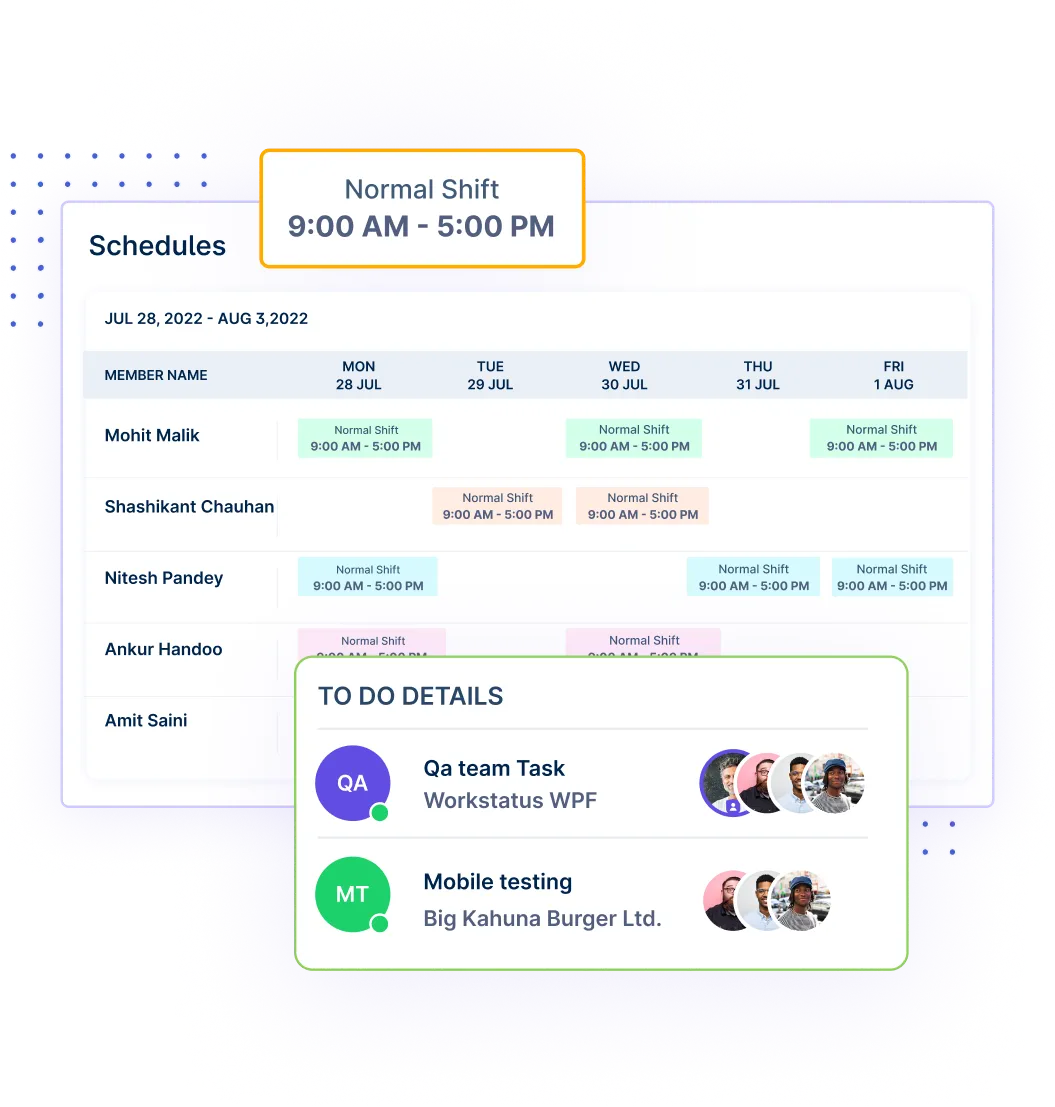
Instead of manually tracking time in and out, Workstatus can track when employees clock in, take breaks, and even take time off.
This ability to set a schedule for the workforce makes it easier to implement attendance standards.
Accurate Live Location Tracking
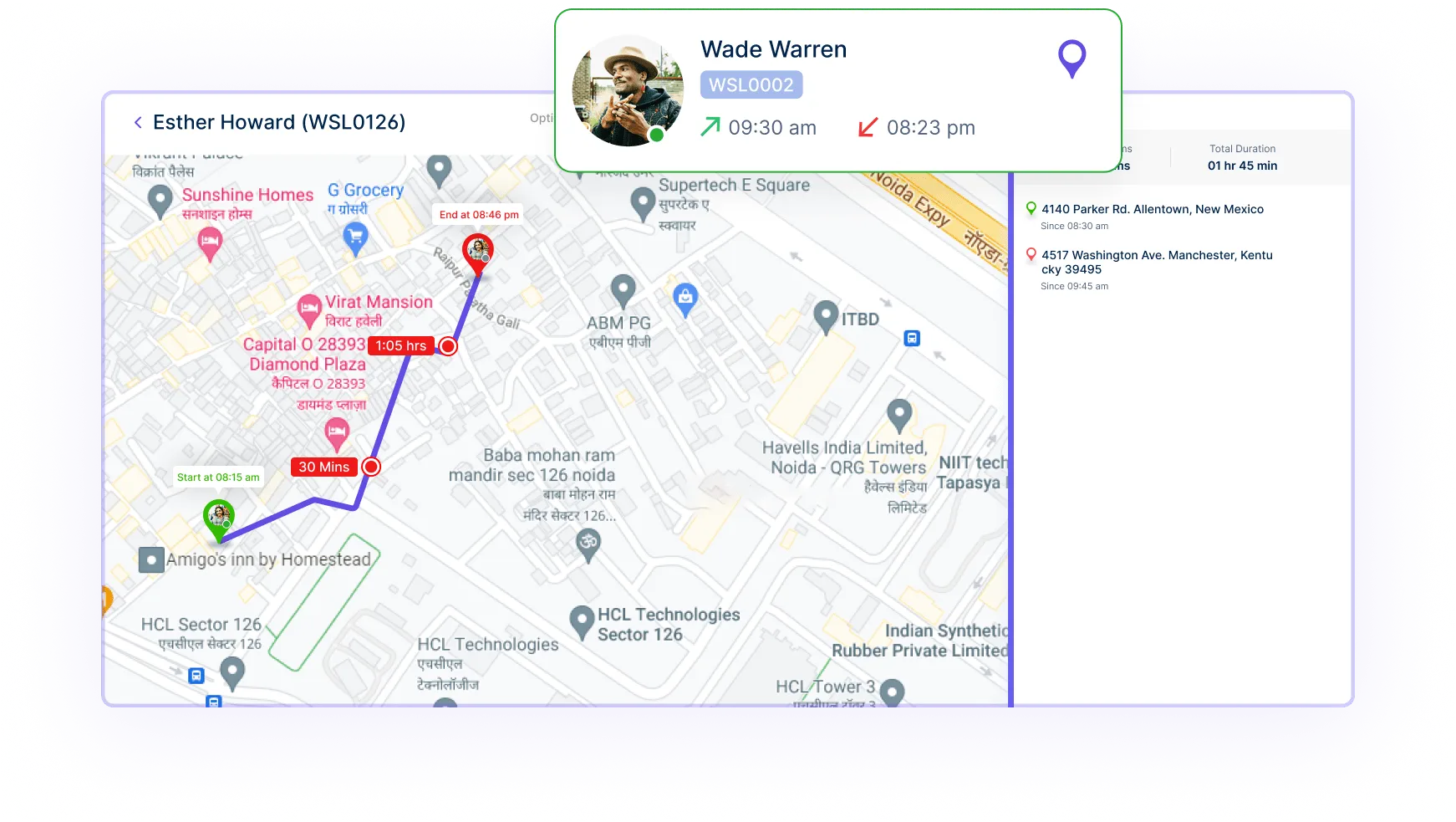 With live location tracking, Workstatus instantly updates managers on the whereabouts of their employees.
With live location tracking, Workstatus instantly updates managers on the whereabouts of their employees.
It’s best to ensure that every employee is in the correct working area, especially for those remotely located or in the field.
Efficient Project Prioritization
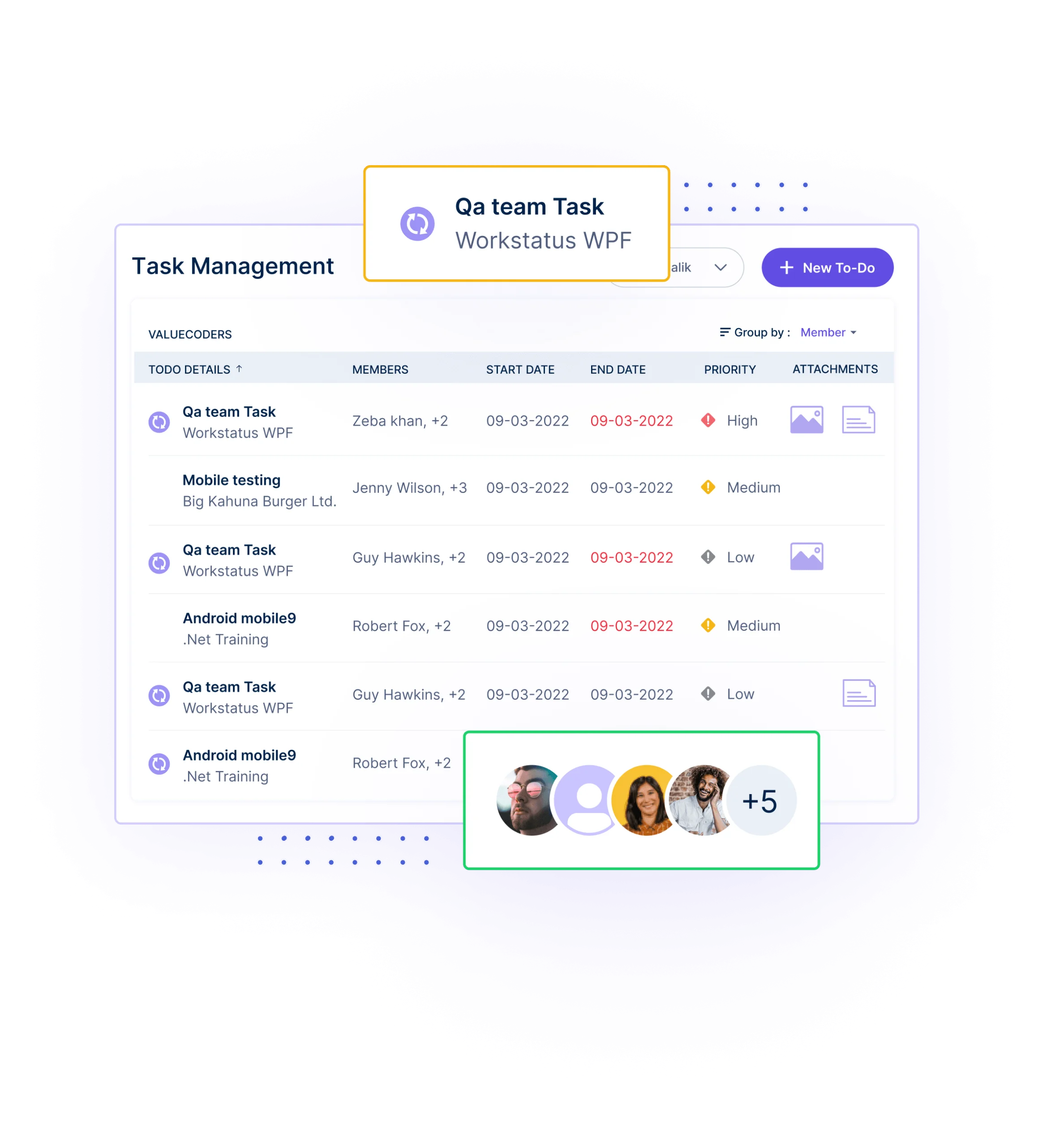 This feature would inform managers which projects to work on and help them complete the most urgent tasks before the due date.
This feature would inform managers which projects to work on and help them complete the most urgent tasks before the due date.
It also assists organizations in managing focus in executing crucial tasks and the correct use of resources.
Seamless Work From Home Monitoring
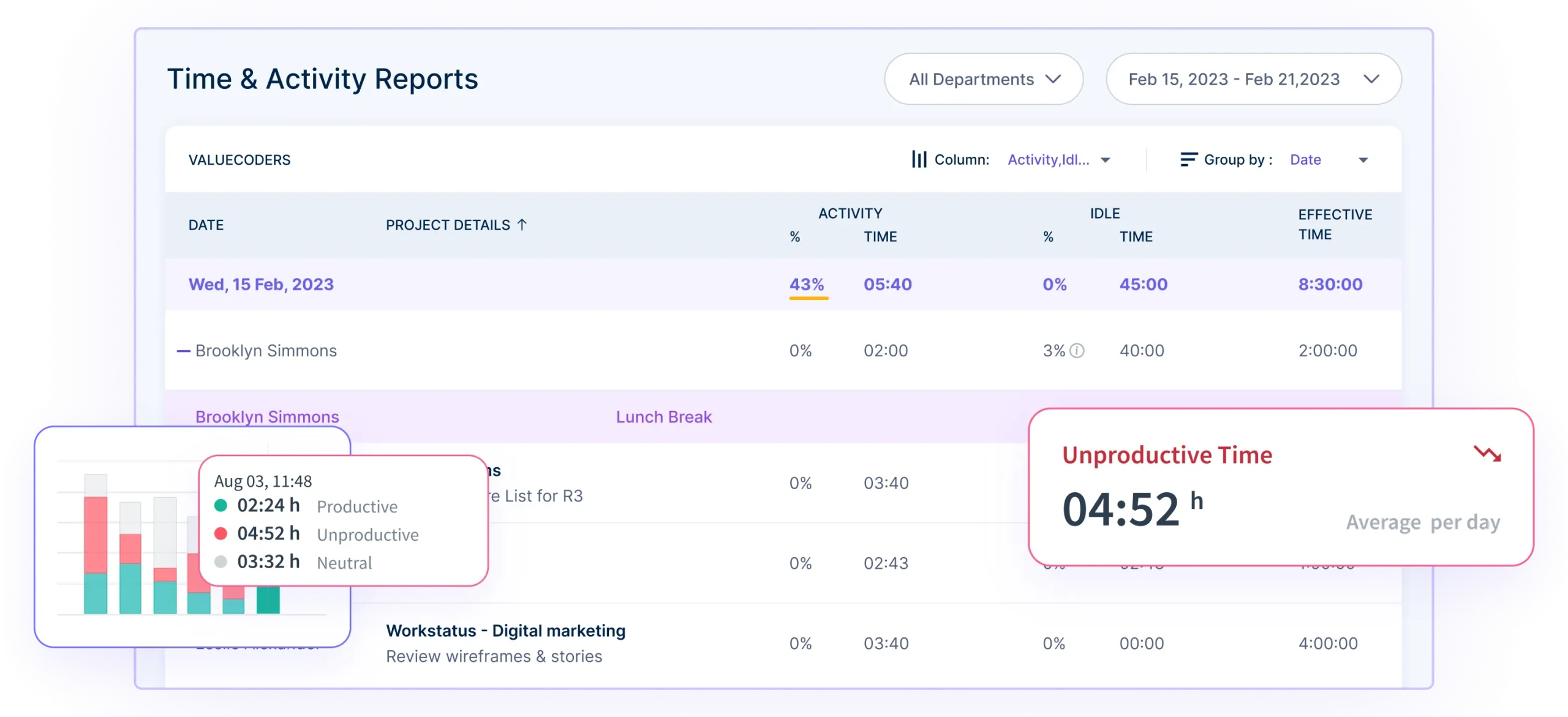
Workstatus tracks employees’ performance based on their assigned tasks, the hours worked, and their overall efficiency in performing a specific job.
It is effective in moderating accountability and flexibility for work-from-home arrangements.
Such features assist HR managers in overcoming or dealing with the challenges of managing a remotely based team, thereby increasing productivity and efficiency in organizational team coordination.
Success Stories
Here are a few success stories of challenges in remote teams in different industries:
Success Story 1: Boosting Team Productivity in a Marketing Agency
A marketing agency noticed remote teams becoming less productive due to interruptions and less supervision.
They used Workstatus, a project tracker application, to monitor their daily work progress and set expectations for members.
These changes resulted in higher project delivery rates and increased client satisfaction levels.
Success Story 2: Enhancing Communication in a Software Development Firm
A software development firm was involved in numerous misunderstandings due to ineffective communication and delays. The company could place frequent scheduled check-ins for team status with Workstatus.
The positive consequence was that it encouraged greater coordination and unity amongst the teams at work.
Success Story 3: Building Trust in a Global Consultancy
A large consultancy firm noted morale issues among its employees working from home; thus, they felt lonely. Such measures included conducting online teaming events and creating a buddy system to boost team members’ interactions.
These changes increased employees’ commitment and lower turnover, yielding better team unity.
Success Story 4: Supporting Employee Well-being in a Financial Institution
A financial institution had many cases of burnout, which automatically reduced morale among the workforce. Employers incorporated workplace wellness programs and daily/weekly organizational ‘stress checks.’
These measures led to improved employee satisfaction and a more resilient workforce.
Success Story 5: Managing Time Zone Differences in a Tech Company
A tech company with a global workforce faced coordination issues due to time zone differences.
They used calendars and calendar invites and encouraged most of the team’s work to be done at different times during the day.
These measures helped to reduce project downtime and increase general employees’ engagement.
These examples illustrate how targeted solutions can effectively address common remote team management challenges.
Future Trends in Remote Team Management
Here are some predicted future trends in remote team management:
Increased Use of AI and Automation
AI will help complete repetitive work, including appointments, tracking, and monitoring, by the system, leaving more time for managers to strategize.
Automating the process will help increase effectiveness since it eliminates manual monitoring.
Emphasis on Employee Well-Being
Remote team management in the future will give much attention to ideas about enhancing employees’ health.
Businesses will utilize solutions in workload allocation and burnout prediction, providing managers with information based on which they can reduce expectations and offer help when required.
Data-Driven Decision Making
It suggests a more significant emphasis on using data analytics to manage remote teams and understand productivity and employees’ working patterns.
With real-time data, managers can determine the allocation of resources, employee performance, and team organization.
Enhanced Collaboration Tools
Since many organizations are embracing remote working, enhanced collaboration tools with features like video conferencing, calendars, and task lists will be crucial.
These tools will only become better and more refined and aim to replicate the reality of the working environment with the advantage of remote operations.
Flexible Work Policies
Future remote work policies will be much more liberal than the current ones, with organizations providing many choices, such as hybrid work frameworks, flexitime, and remote-first environments.
This flexibility will help address the needs of global teams and allow them to balance their work and personal lives.
Closing Thoughts
So there you have it, folks! Managing remote teams is no walk in the park for HR managers; it’s more like herding cats via Zoom.
Between time zone juggling, communication breakdowns, and the occasional Wi-Fi meltdown, remote work has its fair share of challenges in remote teams. However, with the right solutions like Workstatus in place, those hurdles can be overcome.
By setting clear expectations, fostering trust, using the proper collaboration tools, and monitoring team well-being, you can turn these challenges into opportunities for growth.
So, the next time your team member’s camera freezes mid-meeting or a deadline sneaks up on you, remember: remote work may be tricky, but it’s nothing a bit of flexibility (and a good sense of humor) can’t fix!
FAQs
Ques. How can communication be improved with remote teams?
Ans. Improved communication can be achieved by using collaboration tools and scheduling regular check-ins to foster open dialogue.
Ques. What’s the best way to track productivity in remote teams?
Ans. Time-tracking and project management tools effectively monitor progress, ensuring tasks stay on schedule without micromanaging.
Ques. How can time zone differences be handled in remote work?
Ans. Flexible scheduling and asynchronous communication are critical strategies for managing the challenges of time zone differences.



